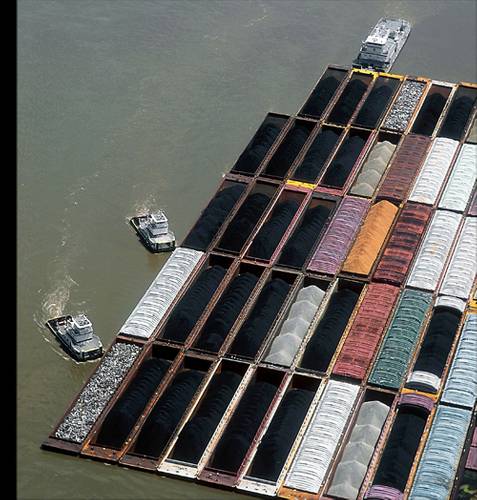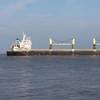USDA Releases Powerful Inland Waterways Study
WCI/NGFA Urge NESP Infrastructure Project to Move Forward.
The National Grain and Feed Association (NGFA) and Waterways Council, Inc. (WCI) today commended the U.S. Department of Agriculture (USDA) for releasing a significant new study that quantifies the cost-savings and competitive advantages that would accrue from investing in long-delayed improvements to inland waterways locks and dams on the Upper Mississippi and Illinois River system.
The study, entitled, Importance of Inland Waterways to U.S. Agriculture, addresses the critical connection between the inland waterways and the competitiveness of American agriculture in global markets. U.S. farmers and agribusinesses, as well as the overall U.S. economy and balance of trade, depend upon and benefit from the inland waterways and its infrastructure, which provide the safest, lowest-cost and most environmentally sustainable and fuel-efficient way to move grain and other agricultural products.
The study was unveiled this afternoon at a Town Hall Meeting conducted at Mel Price Locks and Dam (St. Louis) by Secretary of Agriculture Sonny Perdue, accompanied by Assistant Secretary of the Army (Civil Works) R.D. James. The study was produced for USDA’s Agricultural Marketing Service by Informa Economics.
Highlights of the study include:
- U.S. farmers enjoy a competitive advantage in global export markets in large part because of the nation’s robust, resilient transportation and infrastructure network that moves corn and soybeans, the nation’s highest yielding crops.
- Because of its efficiencies and lower costs, the inland waterways system saves between $7 billion to $9 billion annually over the cost of shipping by other modes. These values are based on all goods currently being moved on the water compared to the same volume transported by rail.
- Every dollar of waterways activity output results in $1.89 in additional U.S. economic activity directly related to the waterways.
- Compared to the status quo, increasing investment in the inland waterways system by $6.3 billion over a 10-year period (through 2029) and $400 million per year thereafter through 2045 cumulatively would grow the waterways’ contribution to U.S. gross domestic product by 20 percent (to $64 billion) and increase waterways-related employment by 19 percent – to 472,000 jobs. The study says this option would more than offset the cost of completing all the proposed projects, and would increase the market value of U.S. corn and soybeans by $39 billion. Conversely, reduced investment would decrease the market value of those commodities by $58 billion, the study says.
- The inland waterways’ infrastructure is aging and needs major rehabilitation and construction to restore its full capability, forestall major disruptions and provide opportunities for growth. Most locks on the Upper Mississippi and Illinois River System have far exceeded their projected 50-year lifespan. Delays can cost operators and shippers more than $44 million annually. For corn, delays on the Mississippi River could have up to a $0.24 per bushel negative impact.
- While the United States currently has a $5.35 per metric ton advantage over Brazil when shipping soybeans on the inland waterways system (from Davenport, Iowa, to Shanghai, China), aging U.S. waterways infrastructure will increase the price to the end-user, lower the demand for U.S. grains and soybeans, and make them less competitive in global markets.
“USDA’s study underscores the inland waterways as a conduit to our nation’s agriculture competitiveness, as well as to overall U.S. economic prosperity. We believe the study makes the case to expedite the Navigation and Ecosystem Sustainability Program (NESP) that would modernize five locks on the Upper Mississippi River and two on the Illinois Waterway to be ready to capitalize on predicted grain shipments, while at the same time improving the health of our marine ecosystems and habitats,” said WCI President and CEO Mike Toohey. “NESP is awaiting Pre-Construction Engineering and Design (PED) funds to be ‘shovel-ready’ for these vital locks,” he continued.
“We appreciate the leadership of Secretary Perdue and USDA in once again spotlighting the importance of the U.S. inland waterways transportation system to U.S. agriculture’s global competitiveness and farmers’ bottom lines,” said NGFA President and CEO Randy Gordon. “Very importantly, this study quantifies the significant cost of further delays in rebuilding America’s inland waterway infrastructure, and it’s not a pretty picture. Foreign competition from countries like Brazil is only increasing given current trade disruptions, and China is investing aggressively in South America’s transportation infrastructure to the United States’ detriment.
“The United States simply can’t afford to lag behind any longer,” Gordon continued. “This study is a wake-up call to the White House Office of Management and Budget and Congress to make the PED funding for NESP available this year, and to ensure growing investments are continued and expedited in the tremendous natural resource that America’s inland waterways represent.”
















